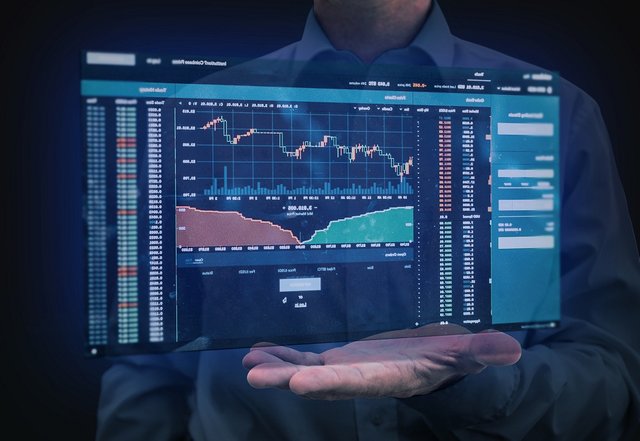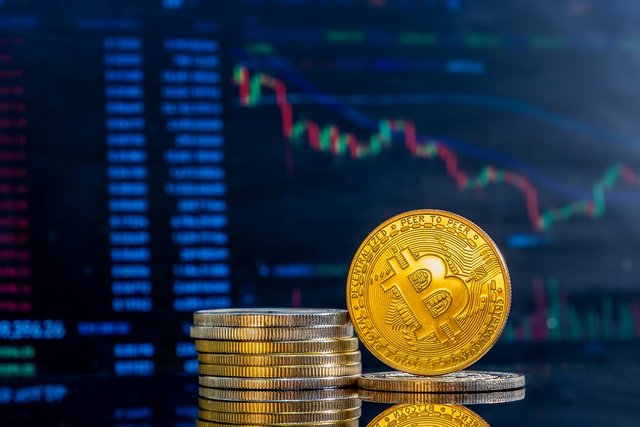The order book is the first main component of an exchange and is an electronic ledger containing a list of the various open offers to sell or buy an asset, organized by price.
The order book on the exchange is updated in real-time the whole day of each cryptocurrency. It means the order book is dynamic and reflects the real-time intent of traders.

Image Source Freepik
Being a complex instrument, the order book is made up of two main components:
The supply and demand side , which contains:
purchase orders — contain information about the buyer, all offers, the quantity they want to buy and the price at which they want the purchase to be made;
sell orders — contain information about the seller, all offers to sell, the quantity they want to sell and the price; At the top of an order book, the highest bid and lowest ask prices are found, and the difference between the best bid and the best ask is known as the spread. If two or more traders enter orders at the same bid or ask price, then the orders are executed according to the arrival time.
the order history where all the transactions that took place in the past are visible;
The second main component of an order book is the matching engine. It uses the order book to execute trades for market participants, and its role is to match incoming buy orders with sell orders and vice versa. The order matching system is the core of all electronic trading platforms and determines their efficiency and dynamism.
Viewing the order book is another significant criterion, providing a visual demonstration of how buyers and sellers interact in the market; visualization is available in various forms, including charts or histograms.
How does it work?
There are several types of orders that can be sent to an order book, but the primary ones are called "passive orders" and "active orders".
Passive orders , such as limit orders or stop orders, are orders to sell or buy at a certain price. These passive orders are entered into the order book and remain there either until the trader cancels them or until the order is executed. These orders are considered passive because they do not significantly change the market price.
Active orders are represented by market orders and are special requests sent to the trading platform. These orders are primarily to sell or buy at the best available price, and in a highly liquid market, these orders are executed almost instantly. In general, market orders do not appear in the order book, but appear in the transaction history column, respectively volume.

Image Source Freepik
When placing a trading order, the main parameters of a transaction are specified: the price at which a trader agrees to buy or sell a cryptocurrency and the total amount of cryptocurrencies. After the order is placed, the trading platform starts looking for a counter order to satisfy the request.
For example, when there is a trader who wants to buy 1 BTC at the price of $29,000, the trader is waiting for a market order to sell 1 BTC at the price of $29,000 or less. If the sum of all orders exceeds 1 BTC, the order will be executed in full; instead, if there is not enough supply, more precisely there are not enough sellers to offer 1 BTC at the specified price, the order will be partially executed. After the execution of the order, the price of the transaction is displayed on the chart and recorded in the order history, and thus, the more transactions are made in one direction, the more the price of the asset will change.
In essence, passive orders, such as limit orders, are market makers because they are liquidity providers. For a trade to take place, a market taker must exceed the market spread and pay the ask price if buying, or the bid price if selling. Specifically, limit orders are removed from the order book on a price/time basis by impatient participants who request their orders to be executed immediately (market orders).
Manipulation forms of an order book
1. Spoofing
In this scenario, a trader enters a single visible order or a series of visible orders that either creates a new bid or adds significantly to the liquidity displayed at the best bid or existing bid. While the order is in existence or the trader has cancelled it, the same trader will quickly executes another transaction but on the opposite side of the market. This makes the pattern manipulative because trader will get better price which was not before absence of the first order.
2. Layering
This type of manipulation is most commonly encountered and is accomplished by entering multiple visible buy or sell orders with the intent of deceiving other market participants as to the actual supply or demand quantity. This scheme is based on the basic microeconomic principle that when more buyers appear, the price will rise, and when more sellers appear, the price will fall.
Traders who want to manipulate the market use this principle to control the price to their own advantage, making more fictitious buyers appear in the order book (by entering buy offers) when they want to increase prices. At the opposite end, by having more dummy sellers, traders will be influenced to help lower the price.

Image Source Freepik
The order book is useful for the trader because it helps gauge the interest of buyers and sellers at specific price levels. Information within an order book can provide valuable clues about potential support and resistance levels. An imbalance of buy or sell orders within the order book can indicate a potential market direction. For example, a large number of buy orders around a certain value could indicate a support level. At the same time, a large number of sell orders could indicate an area of resistance.
In order to better visualize these sell or buy orders, the Depth Chart function can be used. Depth Chart is a visual representation of buy and sell orders for a particular asset at varying prices. This type of chart illustrates both supply and demand sides to show exactly how much of an asset you can buy or sell at a given price.
Components of a Depth Chart
Bid line — describes the cumulative value of bids or buy orders at a given price. This is represented by a green line that slopes negatively from left to right, and buy orders are placed in dollars or other fiat currency;
Ask line — represents the cumulative value of requests or buy orders at a certain price. It is indicated by a red line that slopes negatively from left to right, and sell orders are placed in the cryptocurrency we are analyzing (eg Bitcoin);
Horizontal axis — shows the price at which sell and buy orders are placed;
Vertical axis — on the right, shows the total dollar value of all sell orders placed, and the vertical axis on the left shows the total dollar value of all buy orders placed.
In this type of chart, the total value of the sell orders is expanded to match the dollar amount values that are typically found on the left axis. The difference between the values on the vertical axes gives investors insight into the asset's liquidity and volatility. If the asset has increased liquidity and if the number of investors who want to sell is greater than the number of investors who want to buy, the volume will be tilted to the right and a large sell wall will be created. If, on the other hand, there are more traders who want to buy than those who want to sell, the chart will be tilted to the left, creating a buying wall.
An advantage of order book analysis is that it can be used in conjunction with on-chain analysis . For example, analysts can correlate on-chain metrics with funds flowing in and out of a trading platform. Typically, a gap in the bid-ask spread would increase inversely with the liquidity of an exchange, and this dynamic is very evident, especially in the cryptocurrency market.
When net flows decrease, meaning capital is leaving the exchange, the spread widens, suggesting a decrease in liquidity.A larger gap between the spread and the number of tokens the exchange holds can often be a sign of risk, and some platforms have been accused of wash tradingand that they report inflated volume figures to hide this gap. One way to check if the volume declared by the exchange is real is to compare the volume from the exchange with the volume provided by the on-chain analysis data.
Although investors with huge capital can use different methods to manipulate the order book, when the data provided by it is used together with technical analysis or on-chain analysis, we can have a complete picture of the market of a particular asset.
Thank you, friend!


I'm @steem.history, who is steem witness.
Thank you for witnessvoting for me.
please click it!
(Go to https://steemit.com/~witnesses and type fbslo at the bottom of the page)
The weight is reduced because of the lack of Voting Power. If you vote for me as a witness, you can get my little vote.
Downvoting a post can decrease pending rewards and make it less visible. Common reasons:
Submit
No AI Content Used:
Downvoting a post can decrease pending rewards and make it less visible. Common reasons:
Submit
Downvoting a post can decrease pending rewards and make it less visible. Common reasons:
Submit
Upvoted! Thank you for supporting witness @jswit.
Downvoting a post can decrease pending rewards and make it less visible. Common reasons:
Submit